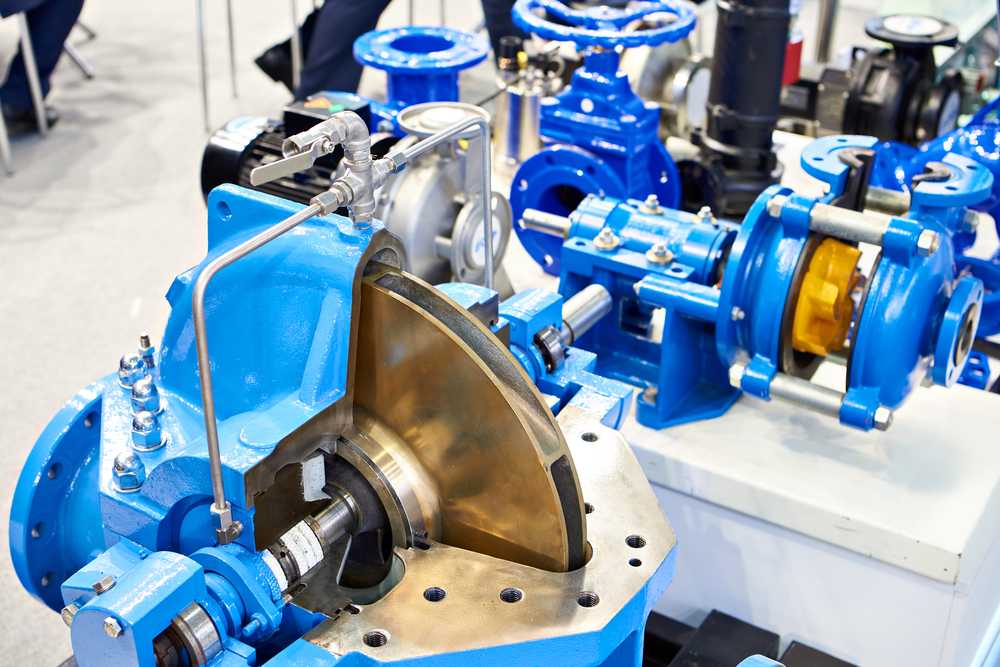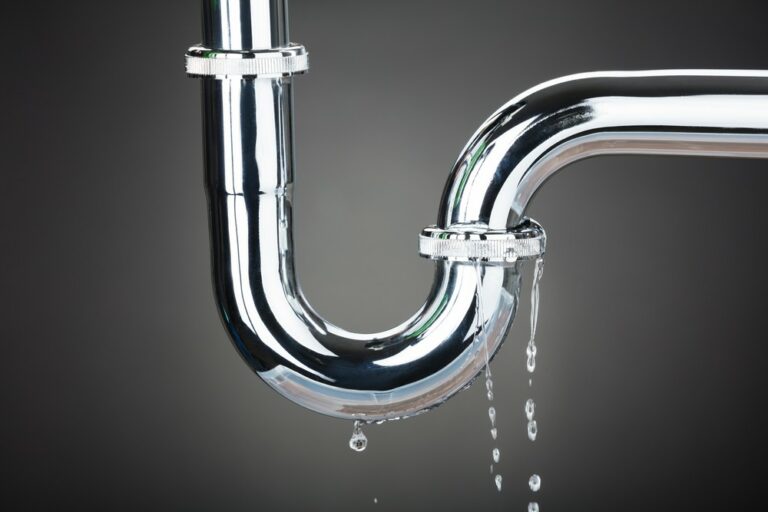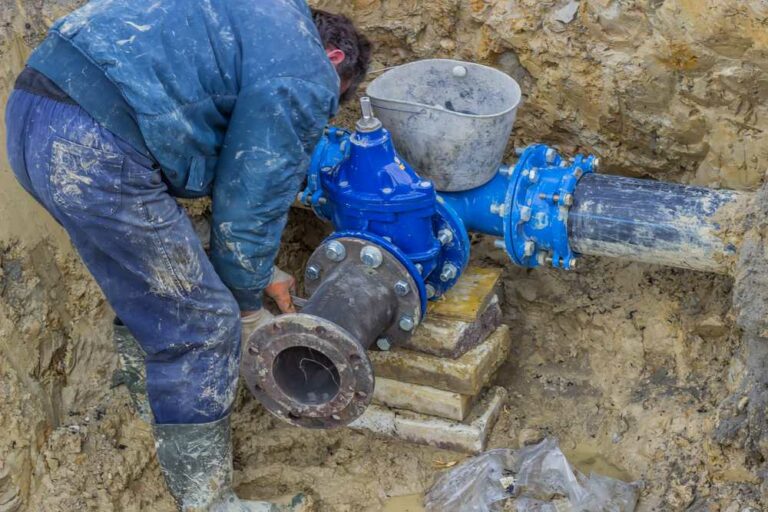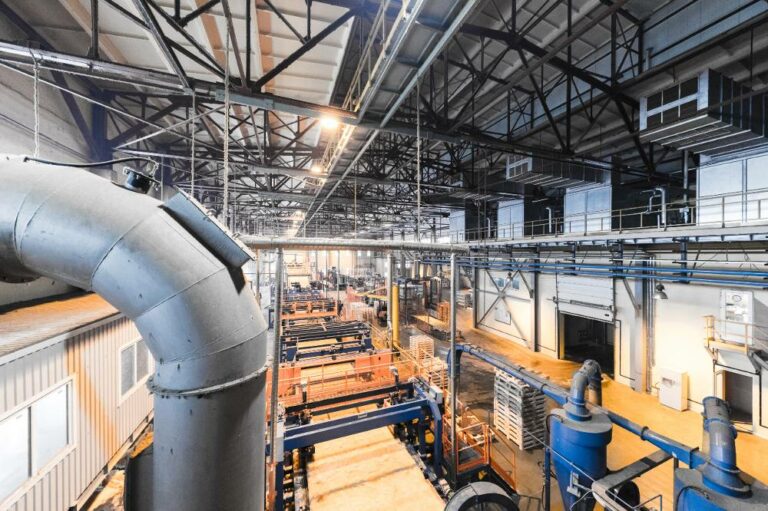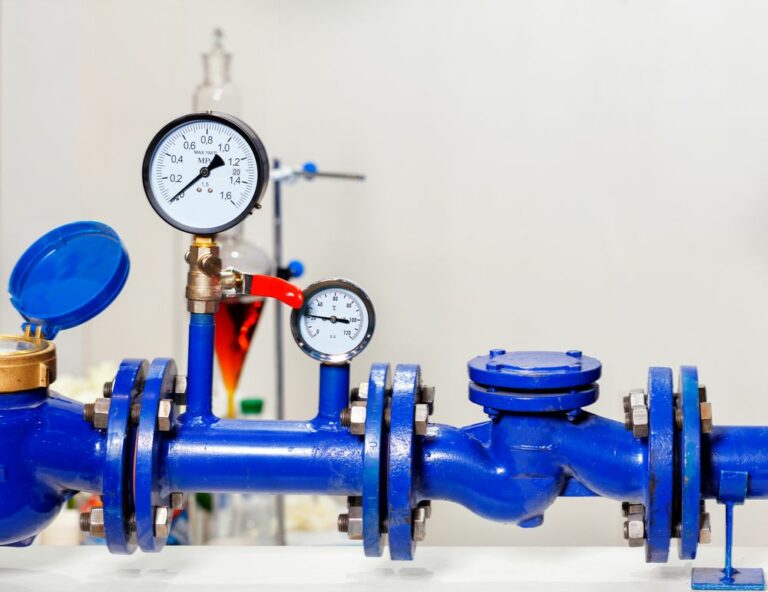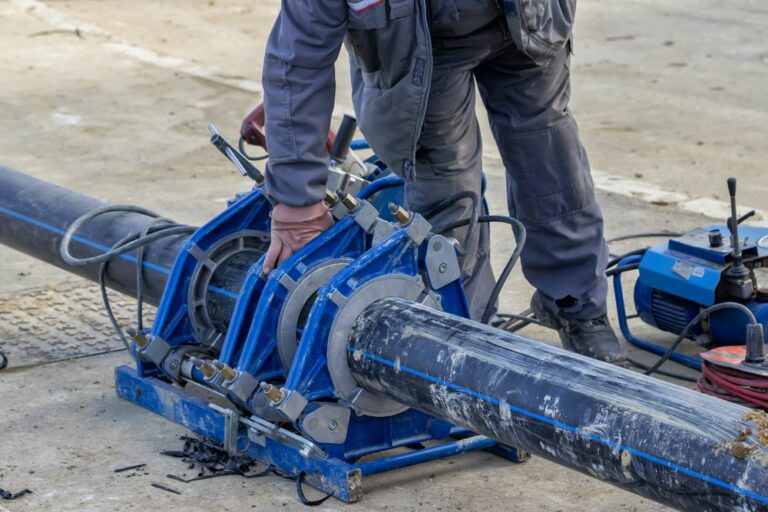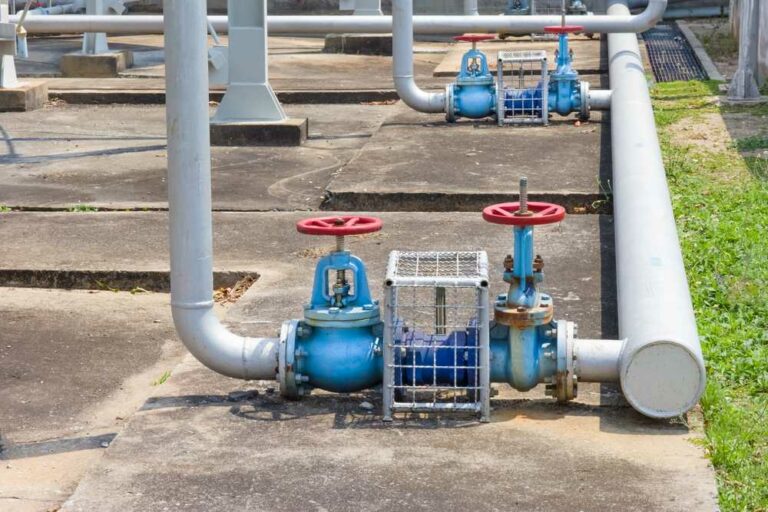Backflow Preventer Installation Tips for Backflow Prevention Assemblies
Water is a vital resource, and ensuring its quality and safety is of utmost importance. Backflow prevention plays a crucial role in protecting our water supply from contamination and pollution. In this blog post, we will delve into the world of backflow prevention, its applications, and how to choose and install the right backflow prevention assembly for your needs, including backflow preventer installation.
Short Summary
- Understanding backflow preventers is essential to guaranteeing a safe and reliable water supply.
- Choosing the right backflow prevention assembly requires an understanding of features and benefits, while regular inspections/maintenance are necessary for effective operation.
- Fire sprinkler systems require specific types of assemblies with inspection, testing & maintenance requirements as specified by NFPA 25.
Understanding Backflow Preventers
Backflow preventers serve to guarantee that water travels exclusively in one direction and prevent contamination resulting from backflows at cross-connections. These devices play a significant role in safeguarding our drinking water from contamination and pollution, making them an essential component of any plumbing system.
There are several types of backflow preventers available, each designed to suit different applications and water pressures. Some common examples include air gaps, reduced pressure backflow assembly (RPBA), and double check valve assembly (DCVA).
Understanding the distinct types of backflow preventer assemblies and their roles is crucial to ensure the safety and reliability of your water supply.
Types of Backflow Preventer Assemblies
Among the diverse types of backflow preventer assemblies, air gap, reduced pressure backflow assembly (RPBA), and double check valve assembly (DCVA) are the most common. Each assembly is designed to cater to specific applications and water pressures. For instance, the RPBA consists of two check valves and a relief valve that releases water externally if either check valve becomes defective. On the other hand, a DCVA can be installed either above or below ground, provided it meets certain installation requirements.
The zone of reduced pressure in an RPBA is kept at a lower pressure than the supply pressure during normal operation, ensuring that water flows in the intended direction and preventing backflow hazards. This intricate design, along with proper installation and maintenance, is crucial in safeguarding our water supply from contamination.
The Role of Relief Valves
Relief valves play a vital role in backflow prevention assemblies, releasing water in the occurrence of backpressure or back-siphonage to avert destruction from abrupt or unforeseen freezes. They are available in assorted sizes and materials, such as bronze, brass, stainless steel, and plastic, catering to unique needs and requirements.
To ensure optimal performance, relief valves should be installed according to the manufacturer’s specifications, and regular testing should be conducted to guarantee their proper functioning. This is essential to ensure that there are no issues of leaking or obstruction, which could compromise the effectiveness of the backflow prevention assembly.
Choosing the Right Backflow Prevention Assembly for Your Needs
Selecting the appropriate backflow prevention assembly is crucial for both residential and commercial applications. In this section, we will explore the different types of backflow prevention assemblies available for various applications, including air gap, hose bib backflow protection, irrigation system, reduced pressure backflow assembly (RPBA), double check valve assembly (DCVA), double check detector assembly (DCDA), and reduced pressure detector assembly (RPDA).
Each type of backflow prevention assembly has its own unique features and benefits, and it is important to understand the differences between them to make an informed decision. Air conditioning.
Residential Applications
In residential settings, backflow preventers are commonly installed to protect against waterborne diseases and ensure the safety of the water supply. The two most common backflow assemblies for residential irrigation systems are the double check valve assembly (DCVA) and the pressure vacuum breaker assembly (PVBA). These assemblies help to protect potable water from becoming contaminated. Homeowners are responsible for installing a backflow preventer on their property.
When installing a backflow preventer on a residential property, it is crucial to adhere to the specific installation requirements for the chosen assembly. For instance, the PVBA must be installed a minimum of 12 inches above the finished grade, while the DCVA may be installed in a vault beneath the finished grade.
For an RPBA, ensure that the area is not prone to water damage and has adequate drainage, as it may occasionally release a limited amount of water due to fluctuations in line pressure up or downstream of the assembly.
Commercial Applications
In commercial properties, the choice of backflow prevention assembly depends on factors such as the placement of the assembly, the magnitude of service, and the level of hazard associated with the connection. Types of backflow preventer assemblies available for commercial applications include the Double Check Valve Assembly (DCVA), Reduced Pressure Zone (RPZ), Industrial Valve, Air Gap, Hose Bib Vacuum Breaker, Atmospheric Vacuum Breaker, and Pressure Vacuum Breaker.
When determining which assembly is suitable for commercial properties, it is advisable to consult the Water Bureau Water Quality Inspection staff for assistance. They can provide guidance on the appropriate backflow prevention assembly based on the specific requirements and risks associated with the property.
Installing a Backflow Preventer
Installing a backflow preventer is a critical step in ensuring the safety and quality of your water supply. In this section, we will discuss the installation process, including preparing the area, installing the backflow prevention assembly, and post-installation considerations.
Preparing the area is the first step in the installation process. This includes clearing the area of any debris, ensuring the area is level, and making sure the area is free of any obstructions.
Preparing for Installation
Before installing a backflow preventer, it is essential to ensure that the area is free of obstructions or debris that could interfere with the installation process. The backflow preventer should be installed within an above-ground enclosure, with the centerline height situated between 30 inches and 60 inches above the floor. Furthermore, sufficient clearance should be provided to allow for testing and/or repair of the assembly.
For initial installations of backflow preventers, a permit from the relevant governmental body is mandated. Adhering to these requirements ensures a successful installation and proper functioning of the backflow prevention assembly.
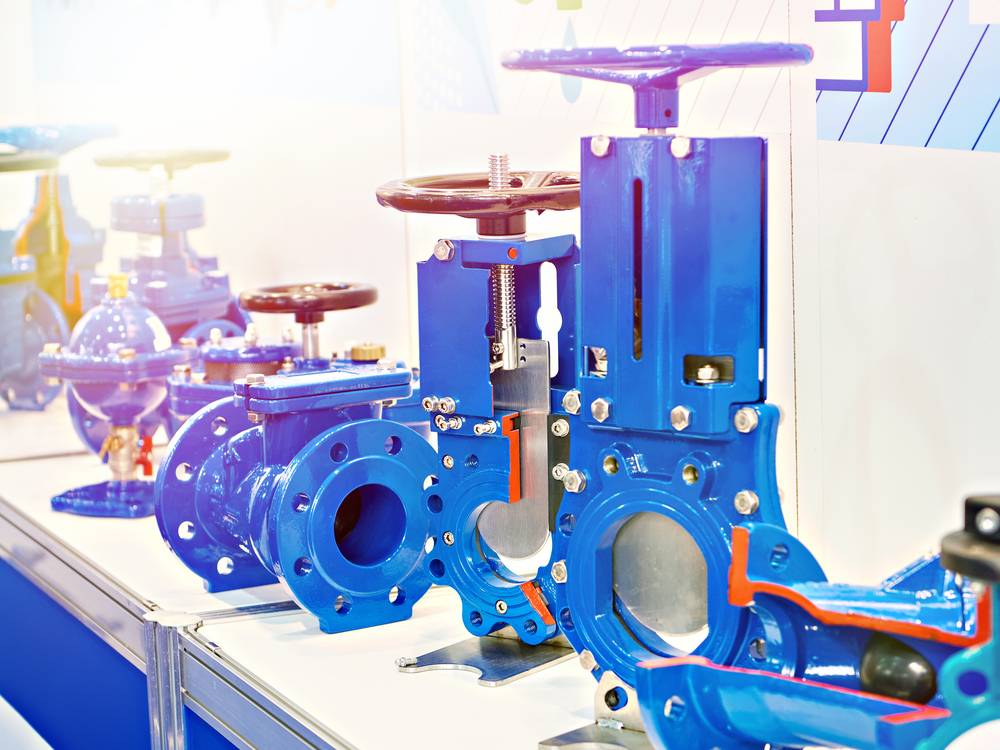
Installing the Backflow Prevention Assembly
The steps for installing a backflow preventer, such as a double-check valve assembly, include gluing three-inch lengths of PVC pipe and elbows turned down into each adapter, with the assembly test cocks on top when the elbows are pointed down. Additionally, it is essential to open test cocks #2, #3, and #4 to relieve pressure inside the valve prior to removing the valve cover, removing the cover, and then removing the retainer from the body. Following the manufacturer’s instructions is crucial for the proper installation and functioning of the backflow prevention assembly.
When installing a Reduced Pressure Detector Assembly (RPDA), it must be installed no less than 12 inches above the finished grade or the 100-year flood plain, whichever is greater. This ensures the optimal functioning of the assembly and protection against backflow hazards.
Post-Installation Considerations
After the installation of a backflow preventer, it is essential to schedule regular inspections and maintenance to ensure the proper functioning of the assembly. Certified assembly testers are authorized to inspect backflow prevention assemblies, and testing should be conducted at regular intervals to guarantee the safety and reliability of the water supply.
In the event that a Reduced Pressure Backflow Assembly (RPBA) becomes clogged or requires repair, it may discharge a large volume of water. In such cases, it is crucial to address the issue promptly to minimize the risk of water damage and ensure the continued protection of the water supply.
Cross Connection Control and Continuous Water Supply
Cross-connection control is a vital aspect of backflow prevention, as it helps identify and prevent potential cross-connections between potable and non-potable water sources. Ensuring a continuous water supply is also essential for the effective operation of backflow prevention devices and the protection of public drinking water from contamination.
Identifying Cross Connections
In order to identify cross-connections, it is necessary to examine the plumbing system for any potential points of contact between potable and non-potable water sources. Inspections should also be conducted to identify potential backflow sources, such as irrigation systems and swimming pools.
By identifying and addressing these cross-connections, homeowners can protect their water supply from contamination and ensure the safety and quality of their drinking water. Installing a backflow prevention assembly is an effective measure to safeguard against cross connections and guarantee the security of the water supply.
Implementing Cross Connection Controls
A comprehensive Cross-Connection Control and Backflow Prevention Program comprises authority, backflow preventers, certified testers and specialists, defensible and detailed records, and education and training. The program helps to ensure the safety and reliability of the water supply by preventing cross-connections and maintaining the effective operation of backflow prevention devices.
Service connection surveys can be conducted to recognize cross-connections and implement appropriate control measures. By adopting a comprehensive program and addressing potential cross connections, the risk of contamination in the water supply can be significantly reduced, ensuring the safety and quality of public drinking water.
Backflow Prevention in Fire Sprinkler Systems
Fire sprinkler systems require specific backflow prevention assemblies to ensure the safety and reliability of the water supply.
In this section, we will discuss the various types of backflow prevention assemblies suitable for fire sprinkler systems, as well as their installation and maintenance requirements.
Types of Backflow Assemblies for Fire Sprinkler Systems
Fire sprinkler systems commonly use Double Check Valve Assembly (DCVA) and Reduced Pressure Zone Assembly (RPZA) as backflow preventers. These assemblies, along with other backflow preventers such as Atmospheric Vacuum Breaker, Pressure Vacuum Breaker, and Spill-Resistant Vacuum Breakers, serve to protect the water supply from contamination and ensure the proper functioning of the fire sprinkler system.
Both DCVA and RPZA consist of independently operating check valves and intermediate vents designed to effectively prevent the backflow of contaminated water into the potable water supply. Ensuring the proper installation and maintenance of these backflow prevention assemblies is crucial for the safety and reliability of fire sprinkler systems.
Installation and Maintenance Requirements
Proper inspection, testing, and maintenance (ITM) of backflow preventers installed on fire protection systems are vital to guarantee their correct operation and to prevent potential hazards to the water supply. According to NFPA 25, a weekly or monthly inspection of backflow prevention assemblies in fire sprinkler systems where control valves are locked or supervised is necessary.
Backflow devices deemed “non-testable” require rebuild or replacement at an interval of five years. Adhering to these requirements ensures the safety and reliability of the water supply, as well as the proper functioning of fire protection systems.
Summary
In conclusion, backflow prevention plays a crucial role in safeguarding our water supply from contamination and pollution. By understanding the distinct types of backflow preventer assemblies, their applications, and proper installation and maintenance practices, we can ensure the safety and reliability of our water supply. Whether it is residential, commercial, or fire sprinkler system applications, investing in the right backflow prevention assembly and implementing effective cross-connection controls is essential to protect the health and well-being of our communities.

Frequently Asked Questions
How do you install backflow prevention?
Installing backflow prevention requires the proper materials to prevent any issues with contaminated water. You should use a backflow preventer that is approved by the local water authority and install it in an above-ground enclosure.
Make sure to check local regulations for additional safety requirements before installation is complete.
Where is the best place to put a backflow preventer?
The best place to put a backflow preventer is in an above-ground enclosure, with the assembly being a minimum of twelve (12) inches above the floor and no higher than four (4) feet above the floor.
This placement will provide optimal protection while also allowing easy access if needed.
Can a backflow preventer be installed on a wall?
In conclusion, due to installation limitations and access restrictions, it is not advisable to install a backflow preventer in a wall.
How high should the backflow preventer be?
Backflow preventers should be positioned a minimum of 12 inches above the floor, with the maximum height being four feet.
It is important to leave adequate clearance to facilitate testing and repairs.
What is an alternative method that can be used to avoid back-siphonage?
The installation of a Reduced Pressure Principle Backflow Preventer (RPBP) is an alternative method used to protect against back-siphonage. This device consists of two check valves, a pressure-operated valve, and other components that work together to maintain an appropriate level of pressure in the system.
The RPBP is designed to detect a sudden drop in pressure and close the valve to prevent contaminated water from entering the potable water supply. It is important to note that the RPBP must be installed and maintained according to the regulations.
Attention Pompano Beach, FL residents and business owners!
Are you in need of a professional, dependable, and top-notch backflow preventer service? Look no further than Backflows Only!
We are your local experts, specializing in backflow testing, repair, installation, and maintenance. Our team is dedicated to ensuring the safety of your water supply and the reliability of your backflow preventer devices.
Our mission? To deliver unparalleled quality and peace of mind to all our clients. Commercial or residential, large or small – no job is outside our range of expertise.
But don’t just take our word for it. Call us today at 954-263-3185 and find out why so many in Pompano Beach, FL have trusted Backflows Only with their backflow preventer needs.
We’re ready to serve you, 24/7. Don’t wait until it’s too late – protect your water supply now with Backflows Only, your local backflow preventer professionals.
Your safety, our priority. Your satisfaction, our guarantee. Choose Backflows Only – because when it comes to backflow prevention, it’s the only choice you should have to make.
Act now and secure your property’s water supply! Dial 954-263-3185 today.

